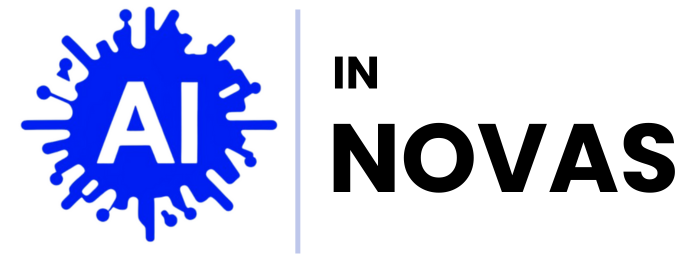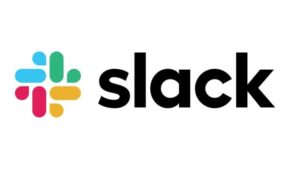In today’s fast-paced digital landscape, effective communication and streamlined sales processes are paramount to any business’s success. As the marketplace becomes increasingly competitive, sales teams are turning to innovative tools to enhance productivity and foster deeper connections with prospects. Among the plethora of options available, two platforms have emerged as frontrunners in the realm of sales automation: Drift and Intercom. Each offers a unique approach to customer engagement, driven by cutting-edge technology and tailored solutions. But which one truly excels in automating your sales efforts? In this article, we will delve into the features, strengths, and potential limitations of both Drift and Intercom, providing you with the insights needed to determine which platform aligns best with your organization’s goals and aspirations. Join us as we navigate the intricate world of sales automation, unraveling the capabilities of these two industry giants.
Understanding the Core Features of Drift and Intercom
When evaluating Drift and Intercom, it’s essential to recognize the distinct functionalities each platform offers to enhance customer interactions. Drift focuses heavily on real-time communication, leveraging live chat and video calls to create instant engagement with visitors. This immediacy not only facilitates quicker responses to inquiries but also empowers sales teams to seize opportunities as they arise. Additionally, Drift’s AI-driven chatbots are designed to pre-qualify leads, routing them to the right sales personnel based on predefined criteria—a feature that optimizes the sales process and boosts conversion rates.
On the other hand, Intercom excels in providing a seamless experience across the customer journey with its robust automation capabilities. The platform integrates various communication channels such as email, in-app messaging, and push notifications, allowing for a more cohesive interaction. Furthermore, Intercom’s customer segmentation tools enable businesses to tailor their messaging and support based on user behavior, ensuring that the right information reaches the right audience. Both platforms share strengths in analytics and reporting, but Intercom distinguishes itself with in-depth data insights and a more comprehensive approach to customer engagement.

Evaluating User Experience and Accessibility in Sales Automation
When choosing between Drift and Intercom for sales automation, evaluating user experience and accessibility is key to fostering effective communication. Both platforms offer intuitive interfaces, yet they differ in navigation and user engagement strategies. Drift excels in delivering a streamlined experience through its conversational marketing tools, making it easy for users to interact without overwhelming them with options. On the other hand, Intercom provides a more intricate setup that can lead to a rich user experience but may pose challenges for some users due to its complexity. Here are some aspects to consider:
- Intuitive Design: Drift shines with a minimalistic interface that guides users naturally.
- Support Resources: Intercom offers extensive documentation and customer support.
- Mobile Accessibility: Both platforms have responsive designs, ensuring access on various devices.
- Customization Options: While Drift provides straightforward customization, Intercom allows advanced modifications that may require a steep learning curve.
Accessibility is another critical factor that distinguishes these platforms. Drift’s chatbots are designed to be easily accessible, allowing users of all abilities to engage in conversations seamlessly. In contrast, Intercom is actively working to improve its accessibility features, but some users have reported challenges in navigating its interface using assistive technologies. To better understand the differences in user experience and accessibility, the following table highlights crucial features:
| Feature | Drift | Intercom |
|---|---|---|
| Ease of Use | High | Moderate |
| Accessibility Features | Strong | Improving |
| Mobile Responsiveness | Excellent | Excellent |
| Setup Complexity | Low | High |

Comparative Analysis of Integration Capabilities and Scalability
When considering sales automation platforms, the ability to integrate seamlessly with existing systems is crucial for businesses looking to streamline their processes. Drift shines in this arena with its robust API offerings, allowing users to connect with a multitude of third-party applications ranging from CRM tools to email marketing solutions. The platform particularly excels in integration with Salesforce, enabling automated lead capture and management. In contrast, Intercom also offers a strong suite of integrations, particularly with customer relationship and messaging tools. However, its ecosystem is slightly less expansive compared to Drift, potentially limiting users who require a wide array of connections to other business applications.
Scalability is another vital factor when assessing these platforms. Drift’s architecture supports scaling effortlessly from small teams to large enterprises, making it a versatile choice for businesses in growth mode. Features such as customizable workflows and performance tracking adapt well as user needs evolve. On the other hand, Intercom focuses on customer experience enhancement, which may introduce challenges as a company’s demands become more complex. While it offers scalability, it often requires additional configuration and support, which could involve a steeper learning curve for users as their operational scale expands. The following table summarizes key aspects of integration and scalability between both platforms:
| Feature | Drift | Intercom |
|---|---|---|
| API Integrations | Extensive | Moderate |
| CRM Compatibility | Seamless with Salesforce | Good, but limited with others |
| Scalability | High adaptability for teams | Requires further customization |

Making the Right Choice: Recommendations Based on Business Needs
Choosing the right sales automation platform requires a clear understanding of your business needs and objectives. When evaluating Drift and Intercom, consider your target audience, the complexity of your sales process, and the level of customer interaction you desire. If your business thrives on engaging visitors in real-time and requires robust lead qualification, Drift might be the ideal choice. Its AI-powered chat functionality ensures that potential customers receive immediate attention, which can enhance the conversion rate significantly. On the other hand, if you require more comprehensive customer relationship management tools alongside automated sales interactions, Intercom could suit your needs better. With its wide array of features, including detailed analytics and robust email automation, Intercom supports a broader spectrum of customer engagement strategies.
Another vital aspect to consider when making your selection is integration capabilities. Both platforms excel in integrating with existing tools, but their focus differs slightly. Drift typically integrates well with CRM systems, enhancing the sales funnel by allowing easy tracking of leads and opportunities. In contrast, Intercom offers more extensive integrations across various marketing tools, making it ideal for businesses that prioritize multi-channel engagement. Weighing these elements against your specific operational demands can guide your decision. For a clearer comparison, refer to the following table:
| Feature | Drift | Intercom |
|---|---|---|
| Real-time Chat Support | Yes | No |
| Email Automation | No | Yes |
| AI-Powered Assistants | Yes | Limited |
| CRM Integration | Excellent | Good |
| Analytics & Reporting | Basic | Advanced |
To Wrap It Up
In the ever-evolving landscape of sales automation, choosing the right platform can significantly influence your team’s productivity and customer engagement. As we’ve explored the features, benefits, and unique offerings of both Drift and Intercom, it’s clear that each has its own strengths tailored to different business needs. Drift shines with its focus on conversational marketing and real-time communication, making it ideal for businesses that value instant customer interaction. On the other hand, Intercom’s robust suite of customer messaging tools allows for deeper engagement and a more personalized approach over time, appealing to those who prioritize relationship building.
Ultimately, the choice between Drift and Intercom hinges on your specific sales goals, audience dynamics, and organizational workflows. Whether you’re leaning towards immediate engagement or long-term relationship nurturing, both platforms offer powerful capabilities that can enhance your sales processes. As you weigh your options, remember to consider the unique demands of your business and the experience you wish to create for your clients. The right platform is out there, waiting to elevate your sales strategy and drive your success into the future. Happy selling!




